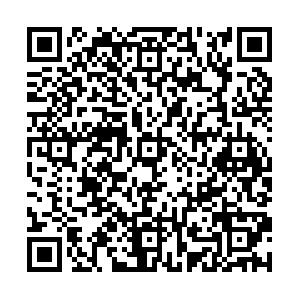Revision of the Chinese version of Multidimensional Bullying Victimization Scale
-
摘要:
目的 修订多维霸凌受害量表(MBVS)中文版,并检验其在中国青少年群体中的信度、效度和跨性别测量等值性。 方法 采用方便整群抽样法于2021年4—5月选取贵州省2 279名中小学生;4~6周后选取1 512人重测,获得有效人数1 500名。以奥尔维斯霸凌量表受害者分量表(OBVQ-V)和流调中心抑郁量表(CES-D)为效标工具,检验其效标关联效度。 结果 探索性因子分析提取出4个因子,累计方差解释率58.34%。验证性因子分析支持4因子模型假设(χ2/df=8.64,CFI=0.93,TLI=0.92,RMSEA=0.06),4个维度分别为直接霸凌、间接霸凌、评价霸凌和关系霸凌。MBVS与OBVQ-V、CES-D的相关系数分别为0.59,0.32。量表的内部一致性信度系数为0.92,重测信度0.72;量表的跨性别等值假设成立。 结论 MBVS中文版具有良好的信度、效度和跨性别等值性,可作为中国青少年群体霸凌受害状况的测量工具。 Abstract:Objective The Chinese version of the Multidimensional Bullying Victimization Scale (MBVS) was revised, and its reliability, validity and cross-gender equivalence were tested in Chinese adolescents. Methods A total of 2 279 adolescents were investigated by using convenient cluster sampling method from April to May 2021, 1 500 adolescents were followed to complete the retest of Chinese version of MBVS after 4-6 weeks. Olweus Bully/Victim Questionnaire-Victim (OBVQ-V) and Center for Epidemiologic Studies Depression Scale (CES-D) were used as the criterion-related validity instrument. Results Exploratory factor analysis extracted 4 factors with a cumulative variance interpretation rate of 58.34%. Results of CFA supports the hypothesis of 4-factor model(χ2/df=8.64, CFI=0.93, TLI=0.92, RMSEA=0.06), and the 4 dimensions included direct bullying, indirect bullying, evaluative bullying and relationship bullying. The correlation coefficient between MBVS and OBVQ-V was 0.59, between MBVS and CES-D was 0.32. The internal consistency reliability was 0.92 and the test-retest reliability was 0.72. The cross-gender equivalence hypothesis of the scale was valid. Conclusion The Chinese version of MBVS has good reliability and validity, as well as gender equivalence and could be recommended for adolescent bullying screening. -
Key words:
- Violence /
- Mental health /
- Questionnaires /
- Students
1) 利益冲突声明 所有作者声明无利益冲突。 -
表 1 MBVS中文版探索性因子分析结果(n=1 140)
Table 1. Exploratory factor analysis results of MBVS-Chinese Version(n=1 140)
因子 项目 载荷 因子 项目 载荷 1 U2 0.74 U16 0.55 U3 0.70 U17 0.73 U4 0.69 U18 0.65 U5 0.68 3 U20 0.66 U6 0.72 U21 0.78 U7 0.70 U22 0.61 U8 0.50 U23 0.65 U9 0.60 U24 0.74 U10 0.56 4 U14 0.53 2 U12 0.73 U15 0.81 U13 0.79 U19 0.62 表 2 MBVS中文版性别等值性分析结果(n=1 139)
Table 2. Results of MBVS-Chinese Version's gender invariance analysis(n=1 139)
模型 χ2/df值 CFI值 TLI值 RMSEA值 △CFI值 △TLI值 △RMSEA值 形态等值 4.98 0.93 0.91 0.04 - - - 弱等值 5.10 0.92 0.91 0.04 0.01 < 0.01 < 0.01 强等值 5.38 0.91 0.90 0.04 0.01 0.01 < 0.01 严格等值 6.78 0.90 0.90 0.05 0.01 0.01 0.01 -
[1] 赵福菓, 何壮, 袁淑莉, 等. 校园霸凌行为问卷的编制[J]. 心理学探新, 2021, 41(1): 64-68. https://www.cnki.com.cn/Article/CJFDTOTAL-XLXT202101010.htmZHAO F G, HE Z, YUAN S L, et al. Constructing the School Bullying Victims Questionnaire[J]. Psychol Explor, 2021, 41(1): 64-68. https://www.cnki.com.cn/Article/CJFDTOTAL-XLXT202101010.htm [2] AWIRIA O, DAN O, BYRNE B. Bullying at school-what we know and what we can do[J]. Brit J Educ Stud, 1994, 42(4): 403. doi: 10.2307/3121681 [3] 谢家树, 魏宇民, BEAR G. 特拉华欺凌受害量表(学生卷)中文版再修订及初步应用[J]. 中国临床心理学杂志, 2018, 26(2): 259-263. https://www.cnki.com.cn/Article/CJFDTOTAL-ZLCY201802011.htmXIE J S, WEI Y M, BEAR G. Revision of Chinese version of Delaware Bullying Victimization Scale-student in adolescents[J]. Chin J Clin Psychol, 2018, 26(2): 259-263. https://www.cnki.com.cn/Article/CJFDTOTAL-ZLCY201802011.htm [4] 赵福菓, 何壮, 袁淑莉, 等. 奥尔维斯欺负量表的Rasch模型分析[J]. 西南大学学报(社会科学版), 2020, 46(5): 115-121. https://www.cnki.com.cn/Article/CJFDTOTAL-XBSW202005012.htmZHAO F G, HE Z, YUAN S L, et al. Rasch analysis of Olweus Bully/victim Questionnaire[J]. J Southwest Univ(Soc Sci Edit), 2020, 46(5): 115-121. https://www.cnki.com.cn/Article/CJFDTOTAL-XBSW202005012.htm [5] RENSHAW T L, COOK R W. Initial development and validation of the youth internalizing problems screener[J]. J Psychoeduc Assess, 2018, 36(4): 366-378. doi: 10.1177/0734282916679757 [6] HARBIN S M, KELLEY M L, PISCITELLO J, et al. Multidimensional Bullying Victimization Scale: development and validation[J]. J Sch Violen, 2019, 18(1): 146-161. doi: 10.1080/15388220.2017.1423491 [7] 张文新, 武建芬. Olweus儿童欺负问卷中文版的修订[J]. 心理发展与教育, 1999(2): 8-12. https://www.cnki.com.cn/Article/CJFDTOTAL-XLFZ902.001.htmZHANG W X, WU J F. Revision of Olweus Bully/victim Questionnaire Chinese version[J]. Psychol Dev Educ, 1999(2): 8-12. https://www.cnki.com.cn/Article/CJFDTOTAL-XLFZ902.001.htm [8] 汪向东, 王希林, 马弘. 心理卫生评定量表手册(增订版)[M]. 北京: 中国心理卫生杂志社, 1999.WANG X D, WANG X L, MA H. Handbook of mental health rating scale(Updated Edition)[M]. Beijing: Chinese Mental Health Journal Publisher, 1999. [9] 吴明隆. 问卷统计分析实务: SPSS操作与应用[M]. 重庆: 重庆大学出版社, 2010.WU M L. Practice of questionnaire statistical analysis: SPSS operation and application[M]. Chongqing: Chongqing University Publisher, 2010. [10] 温忠麟, 侯杰泰, 马什赫伯特. 结构方程模型检验: 拟合指数与卡方准则[J]. 心理学报, 2004, 36(2): 186-194. https://www.cnki.com.cn/Article/CJFDTOTAL-XLXB200402009.htmWEN Z L, HAU K T, MARSH H W. Structural equation model testing: cutoff criteria for goodness of fit indices and chi-square test[J]. Acta Phychol Sinica, 2004, 36(2): 186-194. https://www.cnki.com.cn/Article/CJFDTOTAL-XLXB200402009.htm [11] 吴明隆. 结构方程模型: Amos实务进阶[M]. 重庆: 重庆大学出版社, 2013.WU M L. Structural equation model: Amos advanced practice[M]. Chongqing: Chongqing University Publisher, 2013. [12] 张兴慧, 李放, 项紫霓, 等. 儿童青少年校园受欺负潜在类别及与焦虑的关系[J]. 中国临床心理学杂志, 2014, 22(4): 631-634. https://www.cnki.com.cn/Article/CJFDTOTAL-ZLCY201404014.htmZHANG X H, LI F, XIANG Z N, et al. Latent classes of campus victimization and anxiety among children and adolescents[J]. Chin J Clin Psychol, 2014, 22(4): 631-634. https://www.cnki.com.cn/Article/CJFDTOTAL-ZLCY201404014.htm [13] 黎亚军. 儿童青少年欺负/受欺负行为的发生模式研究[J]. 中国临床心理学杂志, 2021, 29(3): 489-495. https://www.cnki.com.cn/Article/CJFDTOTAL-ZLCY202103009.htmLI Y J. The Co-occurring patterns of bullying/victimization behaviors in adolescents[J]. Chin J Clin Psychol, 2021, 29(3): 489-495. https://www.cnki.com.cn/Article/CJFDTOTAL-ZLCY202103009.htm [14] 黎亚军. 青少年网络受欺负与传统受欺负的共发性[J]. 中国临床心理学杂志, 2015, 23(2): 346-349. https://www.cnki.com.cn/Article/CJFDTOTAL-ZLCY201502036.htmLI Y J. Co-occurrence of cyber victimization and traditional victimization in adolescents[J]. Chin J Clin Psychol, 2015, 23(2): 346-349. https://www.cnki.com.cn/Article/CJFDTOTAL-ZLCY201502036.htm [15] 谢家树, 覃凤荣, BEAR G, 等. 特拉华学生卷入度量表(学生卷)中文版修订[J]. 中国临床心理学杂志, 2019, 27(2): 277-281. https://www.cnki.com.cn/Article/CJFDTOTAL-ZLCY201902014.htmXIE J S, QIN F R, BEAR G, et al. Reliability and validity of the Chinese version of Delaware Student Engagement Scale-student[J]. Chin J Clin Psychol, 2019, 27(2): 277-281. https://www.cnki.com.cn/Article/CJFDTOTAL-ZLCY201902014.htm -

 点击查看大图
点击查看大图
计量
- 文章访问数: 3042
- HTML全文浏览量: 1222
- PDF下载量: 350
- 被引次数: 0





 下载:
下载: